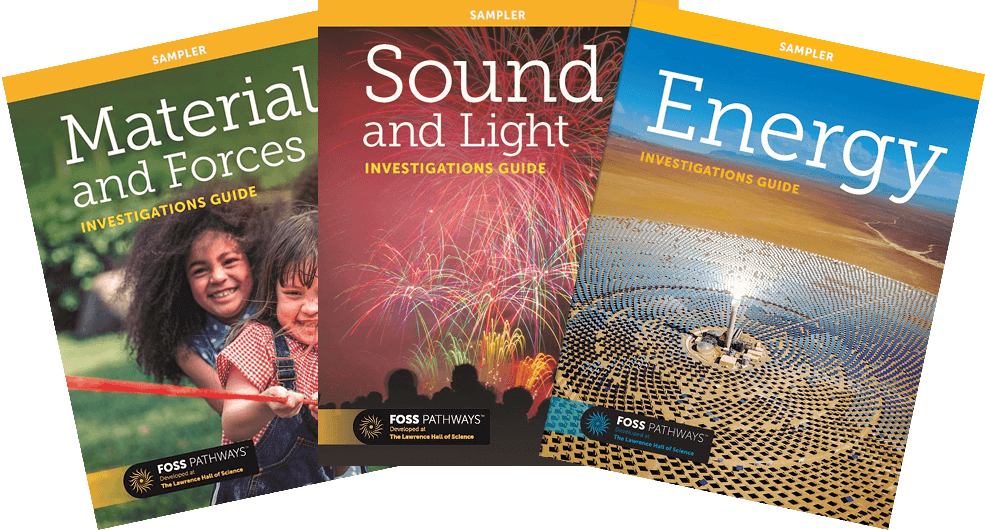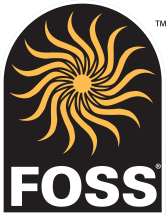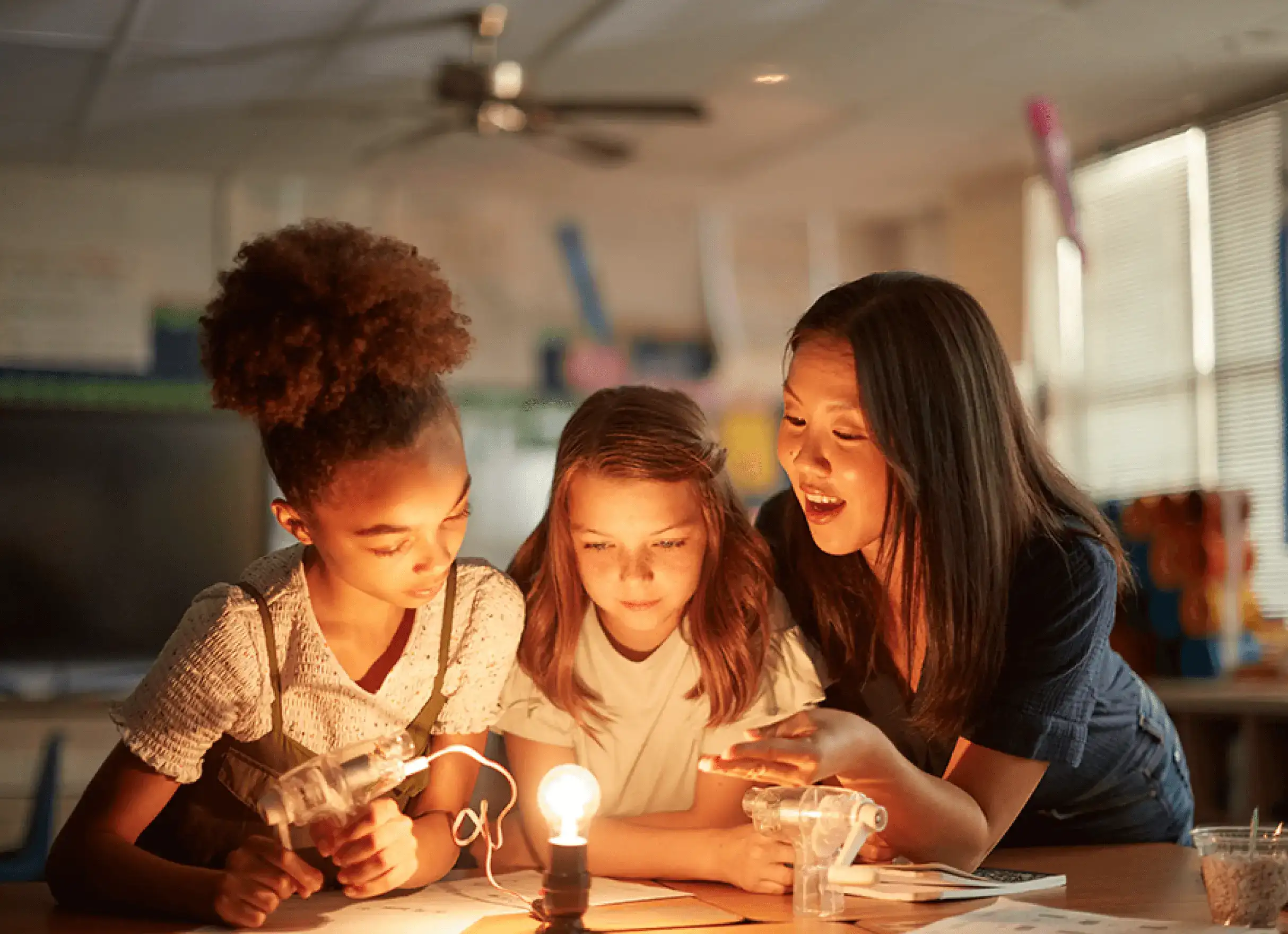Why FOSS works for Mississippi
Phenomena-based science with an eye to the future
FOSS incorporates local and relevant phenomena in a way that addresses standards and instills science literacy that will serve students and their communities well for a lifetime.
FOSS is built around phenomena that students can observe firsthand and relate to the world they know in Mississippi. Phenomena are organized into coherent storylines for the teacher, empowering them to engage students as they explore.
Benefits of Local and Relevant Phenomena
- Leverages students’ prior knowledge
- Offers direct access and connection to their world
- Levels the playing field for all students
- Allows student-generated questioning and experimentation
- Ensures developmentally appropriate phenomena
Want to know how FOSS can work for you?
Complete the form and a representative will provide you with information.
Why Mississippi Districts Choose FOSS
FOSS gives students the opportunity to think and act like scientists and engineers. UC Berkeley’s Lawrence Hall of Science developed FOSS for Mississippi to present science the way students learn it, as they experience phenomena firsthand through active investigation. It’s why FOSS is proven to measurably improve test scores in districts across the country and in local districts in Mississippi.
Bay Waveland Middle School
Desoto Co School District
Harrison Co School District
Lafayette Co School
Pascagoula Municipal Schools
Rankin Co School District
Pontotoc City School District
Tate Co School District
Tupelo Public School
West Jasper School District
Pontotoc City School District
North Panola School
Biloxi Catholic Diocese
Hollandale School District
Nettleton School District
Sample the science program made for today & tomorrow

Pathways Awarded ESSA Tier 4 by Johns Hopkins School of Education

Listen to our Podcast to discover all the ways FOSS curriculum meets the criteria.
Recommended Scope & Sequence
See how FOSS is aligned to the Mississippi College and Career Readiness Standards for Science for each module and course in the chart below.
Mississippi: K-5

Grade
Earth Science
Physical Science
Life Science
Delta Readers
K
L.K.1A.1 | E.K.8A.1 | E.K.8B.1 | L.K.2.1
P.K.5A.1 | P.K.5A.2 | P.K.5B.1 | P.K.5B.2 | P.K.5B.3 | E.K.8B.2 | E.K.8B.3 | E.K.10.1 | E.K.10.2 | E.K.10.3
L.K.1A.1 | L.K.1A.2 | L.K.1.B.1 | L.K.1.B.2 | L.K.3A.2 | L.K.3B.1 | L.K.3B.2
L.K.1A.2 | L.K.2.2 | L.K.2.4
L.K.1A.2 | L.K.2.1 | L.K.2.3 | L.K.3A.1
L.K1B.2
P.K.5A.1
E.K.8A.1 | E.K.8B.1
P.K.5A.2
1
L.1.4.1 | E.1.9A.1 | E.1.9A.2 | E.1.9A.3 | E.1.9B.1 | E.1.9B.2 | E.1.9B.3
P.1.6A.1 | P.1.6A.2 | P.1.6B.1 | P.1.6B.2
L.1.1.1 | L.1.1.3 | L.1.1.4 | L.1.1.5 | L.1.2.1 | L.1.2.2 | L.1.3A.1 | L.1.3B.1 | L.1.4.2 | L.1.4.3
L.1.1.1 | L.1.1.2 | L.1.1.5 | L.1.3B.1
L.1.2.2 | L.1.3B.1
E.1.9A.4 | L.1.4.1
E.1.9B.3
2
E.2.8.1 | E.2.8.2 | E.2.8.3 | E.2.8.4 | E.2.8.5 | E.2.8.6
E.2.10.1 | E.2.10.2 | E.2.10.3 | E.2.10.4 | E.2.10.5
P.2.5.1 | P.2.5.2 | P.2.5.3 | P.2.5.4
L.2.3B.1 | L.2.3B.2 | L.2.4.1 | L.2.4.2
L.2.2.1
L.2.2.2
P.2.6.1 | P.2.6.2
E.2.8.1 | E.2.8.2 | E.2.8.3
E.2.10.3 | E.2.10.4 | E.2.10.5
3
E.3.7A.1 | E.3.7A.2 | E.3.7A.3 | E.3.7B.2 | E.3.7B.3 | E.3.7B.4 | E.3.9.2 | E.3.10.1 | E.3.10.4
3-PS2-1 | 3-PS2-2 | 3-PS2-3 | 3-PS2-4 | 3-5-ETS1-1 | 3-5-ETS1-2 | 3-5-ETS1-3
ScienceFLEX Energy and
States of Matter+
P.3.5.1 | P.3.5.2 | P.3.5.3
L.3.1.1 | L.3.1.2 | L.3.1.3 | L.3.2.1 | L.3.2.3 | L.3.2.4 | L.3.2.5 | L.3.4.1 | L.3.4.2 | L.3.4.3 | L.3.4.4 | L.3.4.5
Mississippi Science Grade 3▴
E.3.7B.1 | L.3.1.1 | L.3.1.3 | L.3.2.1 | L.3.2.2 | L.3.2.3
4
E.4.9A.1 | E.4.9B.1 | E.4.9B.2 | E.4.9B.3 | E.4.9C.1 | E.4.9C.2 | E.4.9C.3 | E.4.9C.5 | E.4.10.1 | E.4.10.2
P.4.6A.1 | P.4.6A.2 | P.4.6A.3 | P.4.6A.4 | P.4.6A.5 | P.4.6A.6 | P.4.6B.2 | P.4.6B.3 | P.4.6B.4 | P.4.6C.3 | E.4.10.1 | E.4.10.2
P.4.6C.1 | P.4.6C.2
L.4.1.1 | L 4.1.2 | L.4.1.3 | L.4.2.2 | L.4.1.5
Mississippi Science Grade 4▴
E.4.9B.3 | E.4.9C.3 | P.4.6B.1 | P.4.6B.2 | P.4.6B.3 | P.4.6B.4 | L.4.2.1 | L.4.2.2
5
E.5.8A.1 | E.5.8A.2 | E.5.8A.3 | E.5.8A.4 | E.5.8B.1 | E.5.8B.2 | E.5.8B.3 | E.5.8B.4 | E.5.10.1
P.5.5A.2 | P.5.5A.3 | P.5.5A.4 | P.5.5B.1 | P.5.5B.2 | P.5.5B.3 | P.5.5B.4 | P.5.5C.1 | P.5.5C.2 | P.5.5C.3
P.5.6.1 | P.5.6.2 | P.5.6.3 | P.5.6.4 | P.5.6.6
L.5.3A.1 | L.5.3A.2 | L.5.3B.1 | L.5.3B.2 | L.5.3B.3 | L.5.3B.4 | E.5.10.1
Mississippi Science Grade 5▴
E.5.8B.2 | E.5.8B.3 | E.5.8B.4 | E.5.8A.1 | P.5.5A.1
*Next Generation Edition
+ScienceFLEX by Delta Education/School Specialty
▴Available as eBooks
FOSS Next Generation Middle School

Grade
6 – 8
Integrated Middle Grades
MS-PS1-4 | MS-PS3-3 | MS-PS3-4 | MS-PS3-5 | MS-ESS1-1 | MS-ESS2-4 | MS-ESS2-5 | MS-ESS2-6 | MS-ESS3-2 | MS-ESS3-3 | MS-ESS3-4 | MS-ESS3-5 | MS-ETS1-1 | MS-ETS1-2 | MS-ETS1-3 | MS-ETS1-4
MS-LS1-1 | MS-LS1-2 | MS-LS1-3 | MS-LS1-4 | MS-LS1-5 | MS-LS1-6 | MS-LS1-7 | MS-LS3-2
MS-PS1-1 | MS-PS1-2 | MS-PS1-3 | MS-PS1-4 | MS-PS1-5 | MS-PS1-6 | MS-PS3-3 | MS-PS3-4 | MS-PS3-5 | MS-ETS1-1 | MS-ETS1-2 | MS-ETS1-3 | MS-ETS1-4
MS-ESS1-4 | MS-ESS2-1 | MS-ESS2-2 | MSESS2-3 | MS-ESS3-1 | MS-ESS3-2 | MS-ESS3-3 | MS-ESS3-4 | MS-ESS3-5 | MS-LS4-1
MS-LS1-6 | MS-LS1-7 | MS-LS2-1 | MSLS2-2 | MS-LS2-3 | MS-LS2-4 | MS-LS2-5 | MS-PS3-4 | MSESS3-3 | MS-ESS3-4 | MS-ETS1-1 | MS-ETS1-2
MS-LS3-1 | MS-LS3-2 | MS-LS4-1 | MS-LS4-2 | MS-LS4-3 | MS-LS4-4 | MS-LS4-5 | MS-LS4-6 | MS-ESS1-4
MS-PS2-2 | MS-PS2-3 | MS-PS2-5 | MS-PS3-2 | MS-PS3-5 | MS-ESS3-4 | MS-ETS1-1 | MS-ETS1-2 | MS-ETS1-3 | MS-ETS1-4
MS-PS2-1 | MS-PS2-2 | MS-PS2-4 | MS-PS2-5 | MS-PS3-1 | MS-PS3-2 | MS-PS3-5 | MS-ESS1-2 | MS-ETS1-1 | MS-ETS1-2 | MS-ETS1-3 | MS-ETS1-4
MS-PS2-4 | MS-PS4-2 | MS-ESS1-1 | MS-ESS1-2 | MS-ESS1-3 | MS-ESS1-4 | MS-ESS2-2 | MS-ESS2-4 | MS-ESS3-1 | MS-ESS3-2 | MS-ESS3-3 | MS-ESS3-4 | MS-ETS1-1
*Half-length courses
Physical Science content
Earth Science content
Life Science content
Engineering content
Resources
The FOSS curriculum is designed as a laddered series of experiences that cumulatively develop not just knowledge, but scientific thinking across all three dimensions. You’ll find that the research-based FOSS curriculum with complete equipment kits is ideal for your elementary and middle school classroom. Review the Mississippi resources below and see for yourself why FOSS is the Full Option Science System that works for Mississippi teachers and students.
FOSS Pathways:
Mississippi Overview Brochure
FOSS Pathways:
Mississippi K-5 Scope and Sequence
FOSS Pathways:
Mississippi K-5 Features and Benefits
FOSS:
K-5 Correlations to the Mississippi College and Career Readiness Standards for Science
FOSS: Mississippi
Mississippi College and Career-Readiness Standards for Science

FOSS is your Trusted Partner, we have unmatched support to take science instruction to the next level.
FOSS ensures your success through direct, in-person professional learning that goes far beyond any other science curriculum. We’ll help you design the optimum mix of support for your district.

